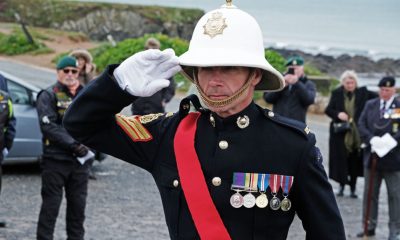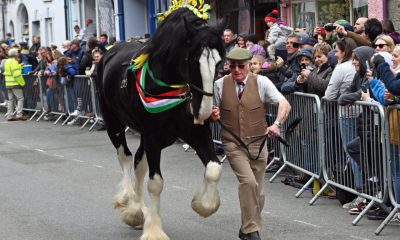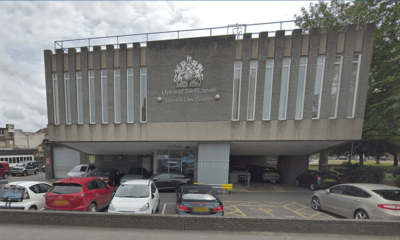News
Judge’s remarks as Kyle Bevan and Sinead James jailed for Lola’s death

The following are the words of Mr Justice Griffiths:
LOLA JAMES was described by her grandmother as a character who loved life. Her father said she was always smiling and happy – a little ray of sunshine with a laugh which would fill the room with pure joy.
Her photograph reminds us of a beautiful little girl but you, Kyle Bevan, murdered her when she was only two years old, and you, Sinead James, allowed her death.
Her death has shattered a family, including the childhood of her surviving sisters.
No-one who listened to the victim personal statements in court today could fail to be profoundly moved by them.
In 2020, Sinead James lived as a single mother in Haverfordwest with her three daughters.
Kyle Bevan was not the father of any of these children, but very soon after he met Sinead James – in February 2020 – he was sleeping in her house every night, and when lockdown started in March 2020, it was his home.
I am sure from the evidence at trial that Kyle was responsible for multiple assaults on the children before he murdered Lola.
Whilst the evidence of some in isolation would have been inconclusive, taken together it is compelling.
A 2am text on April 19, 2020, shows that one of the girls had smashed her face, which Kyle blamed on the stairs.
On April 26, Sinead James noticed a mark under Lola’s mouth. Kyle blamed it on her falling down.
A text at 1.35am on May 4 shows that Lola was screaming when Kyle was with her. The next day he told Sinead James that Lola dropped to the floor and bit her lip. The text record shows that Sinead saw Lola spitting at Kyle, and making what he described as a horrible noise at him. I have no doubt that this was because Lola was protesting as a child who could not yet speak the abuse she had suffered.
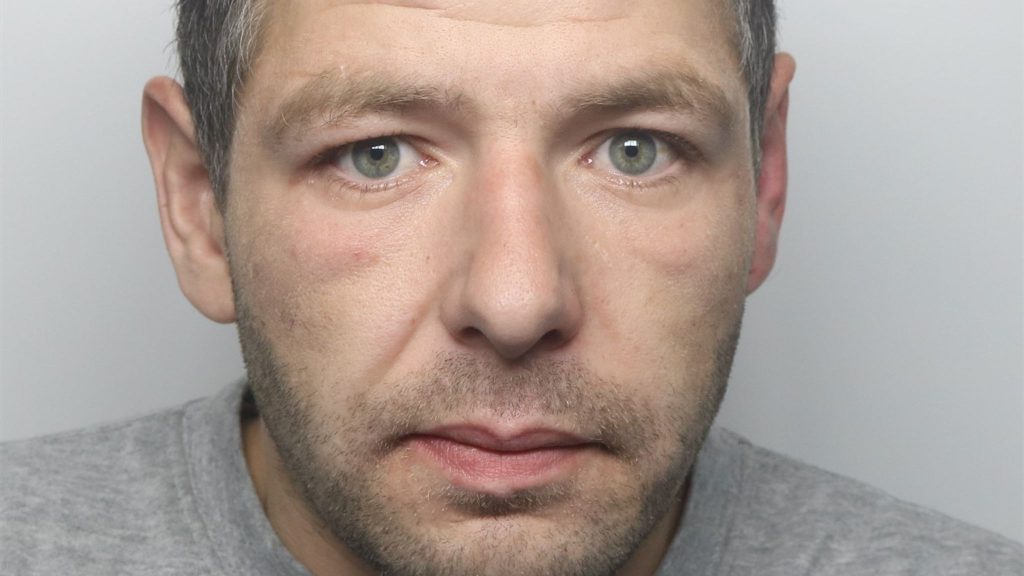
On May 10, 2020, [James’ youngest child] was photographed by a neighbour with a black eye. Sinead told her that [the child] had an accident when Kyle was looking after her.
On May 14, Kyle was described as having smashed up the house when he had taken a Xanax for recreational purposes. He took a hammer to a light switch. Sinead James was sufficiently concerned to take the children to a neighbour overnight, but she brought them back the next day.
A few days later, Sinead James cousin pointed out the dirty, messy state of her house, and warned her social services might get involved. Kyle was angry and aggressive about that suggestion.
On June 8, 2020, Sinead James lied to her heath visitor on the telephone that she had a female person in her house, covering up that it was actually Kyle Bevan.
On June 11, Sinead texted ‘I’m done’ and ‘I’m finished with Kyle’. He had grabbed her arm during an argument. She texted: ‘I’m not putting up with it. I have the kids to think about’. But she let it pass and he carried on living in the house with the children and was often left in sole charge of them.
On July 5, Sinead and Kyle argued and she told him to get out. She texted him ‘What you are doing is a form of domestic violence. I know, I’ve been through it’. He refused to leave the house, and she took it no further.
On July 7, 2020, Kyle Bevan pushed a pram into a busy road with the baby in it, shouting “f*** it”. Sinead James had to dive in and rescue the baby from the oncoming traffic. She took no other action.
On July 9, the grandmother of Kyle’s own daughter messaged Sinead James that he had been abusive to his ex-partner and their daughter and expressed concern that he was around Sinead James’ children.
Sinead asked Kyle’s mother about it, who said it was not true. She made no other enquiry, and took no steps to withdraw or protect her children from Kyle.
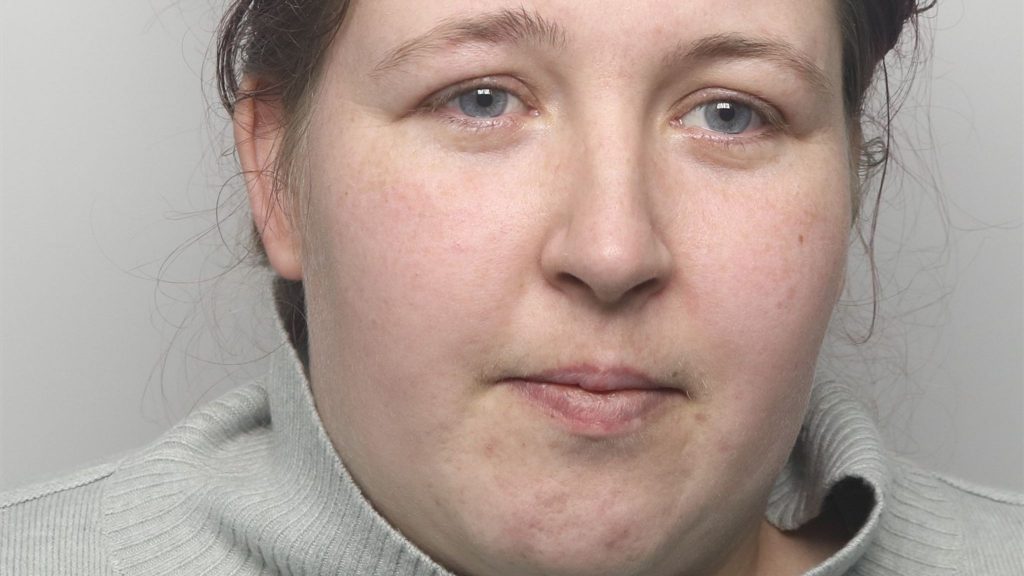
On the same day, Lola suffered a nose injury, and Sinead wondered if it was broken. Kyle told her Lola had fallen accidentally on to a coffee table. He blamed the dog.
At the same time, two witnesses noticed marks either side of Lola’s neck, which suggested she had been grabbed or hit.
But Sinead lied and said that had already been done. In fact, all that had happened, according to her evidence at trial, was that she had been told by Kyle that his mother was a nurse, which was not true – although she was a healthcare assistant, and that she had looked at Lola’s injured nose in a video call.
Lola was not taken to a hospital or to a doctor or examined in person by any qualified person. Her nose was left to heal in its own way.
The very next day, on July 10, when Kyle was alone with the baby, Sinead texted him: ‘You don’t need to tell me what you are doing with them. I do trust you with them’.
On July 11, texts show that there was some sort of incident when Lola was in Kyle’s care, but Sinead texted him ‘Don’t feel bad’.
I am sure that, by the time of the murder, Sinead knew Kyle was not to be trusted.
On July 16, the day before Lola was beaten into a coma, she asked him for his date of birth so she could do a Clare’s Law, or domestic violence disclosure scheme, check on him. He refused to give it to her.
She realised that was suspicious, but she did not press it.
That night, the night of July 16-17, Sinead James was woken at midnight by a bang followed by Lola screaming.
She got up, and saw Kyle Bevan holding Lola by her bed. When he said ‘I’ve got this’, she just went away. She did not go into Lola’s bedroom, or have a proper look at what happened.
She went back to her own bed and left Lola alone with Kyle while she slept.
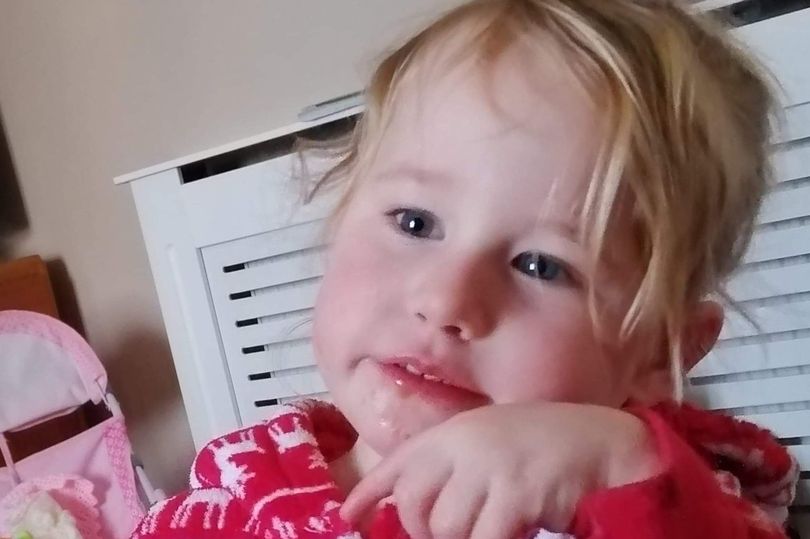
During that night, he carried out the further attacks on Lola which killed her.
By 4.26am, Kyle had Lola downstairs and was photographing injuries he had inflicted on her back.
By 6.30am, he had inflicted a total of over 100 visible injuries all over her body. Some of them were caused by a weapon, although the weapon used was not recovered or identified.
They included injuries to Lola’s right thigh with circular elements in a linear pattern caused by a weapon, and bleeding puncture wounds to her forehead, also caused by a weapon.
Kyle Bevan hit the side of Lola’s head with such force that it caused ear bruising and subdural bleeding in her skull on that side.
He shook her head backwards and forwards so violently that she lost consciousness and died from brain damage. Dr Michelle Jardine is a consultant in paediatric intensive care who has worked in Wales for 12 years and before that at Great Ormond Street and at the Royal Brompton Hospital.
She saw Lola’s body in intensive care and gave evidence it was one of the most extensively battered and bruised bodies she had ever seen.
At 6.30am, Kyle Bevan searched on Google ‘My two-year-old has just taken an bang to the head and gone all limp and snoring. What’s wrong?’.
The results told him to get emergency help at once. Had he done that, Lola would’ve had a better chance at survival. But he didn’t.
He didn’t get emergency help, he didn’t wake Lola’s mother. Instead, he tried to cover his tracks.
He cleaned up Lola’s vomit and blood in the bath, he cleaned the bath, he cleaned the floors, he scrubbed the body itself all over – so strongly that despite the child already being injured and unconscious, the temporary transfer tattoos on her arms were removed without trace.
He put clean clothing on her. He dreamt up a cover story that all Lola’s injuries were attributable to a fall down the stairs after a push from the dog.
He moved Lola’s body around, callously photographing it and even filming it at one stage. Half an hour after the Google search, his mother woke up and saw texts he had been sending her.
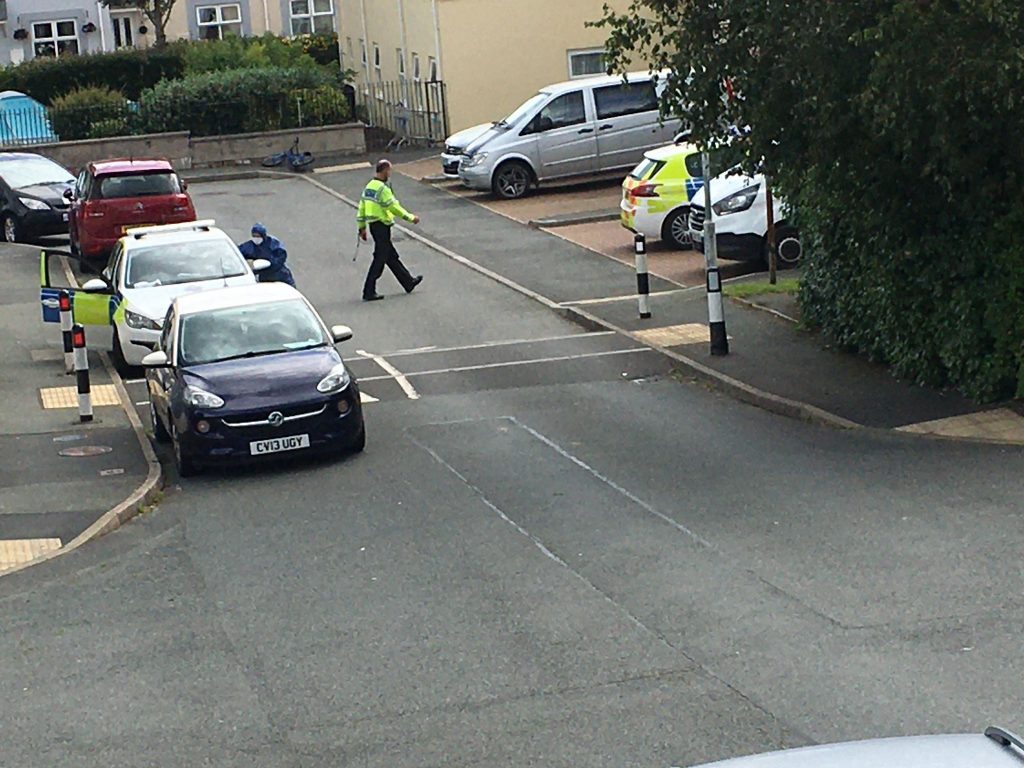
She immediately texted back that he must wake Sinead James up and get Lola to accident and emergency.
It was 6.56am. Even then, he did not wake up Lola’s mother, or call emergency services. He was too concerned about covering up the crime scene to do anything at all for the child.
It was only half an hour after that, at about 7.27am, that he finally woke Sinead James, and not having called an ambulance himself, told his mother to do it.
Ambulances were then called by his mother and by Sinead James, and were on the scene immediately.
When the police came later in the morning, at about 11am, he delayed opening the front door. When they did get in, he was still vacuum cleaning away as much forensic evidence as he could.
There is only one sentence for murder, and that is imprisonment for life.
I must also set the minimum term that Kyle Bevan must serve before he can even be considered for release on licence by the parole board.
It is possible he will never be released, as that would happen only if and when the parole board is satisfied that detention is no longer necessary for the protection of the public. That is why it is called a minimum term.
Even if he is released, he will remain on licence and be subject to a call to prison for the rest of his life.
The minimum term is not his sentence – his sentence is life imprisonment. Paying due regard to Schedule 21 of the Sentencing Act and reflecting the particular circumstances of the case, I am adopting 15 years as the starting point for consideration of the minimum term, but there are aggravating features which very significantly increase it.
Lola was a very young child – two years and 10 months old. She was particularly vulnerable, not being strong enough to resist, or old enough to tell anyone what was happening.
Kyle Bevan was in a position of trust, having assumed the role, as he described himself to the ambulance crew, of Lola’s step-father.

He started to hurt Lola at midnight, but he carried on until she was unconscious at 6.30am. He did not stop when Sinead James nearly caught him in the act, when she heard Lola screaming at midnight.
This was a sustained, deliberate and very violent attack. The attack was completely unprovoked.
There is no suggestion that Lola was playing up in any way before she was killed. For some of the injuries, Kyle Bevan used weapons.
The attack would’ve caused both mental and physical pain and suffering before the onset of coma. It was the culmination of several months of physical child abuse.
Although I have decided that this is not a case within paragraph 2.2.B of Schedule 21, I am sure that Kyle Bevan did this as an exercise of power. An assertion of superiority over the only person he could feel superior to – a helpless child.
Afterwards he covered up what he had done by removing or replacing the weapons and cleaning up the body and the crime scene before getting help.
He ignored advice from his mother about getting immediate help. As soon as the police were involved he tried to rehearse his partner in a false account which he had concocted, stressing to her ‘You’ve got to get it bang on like’.
He has no remorse at all, even now. At the time, he did not even simulate sadness about Lola’s injuries and critical condition when everyone around him was distraught.
At the hospital he threatened and insulted the staff. He hurled abuse at the victim’s natural father, and challenged him to a fight for no reason at all as Lola lay dying in critical care.
He was openly concerned only about himself.
The serious and numerous aggravating features raise the appropriate minimum term far above the starting point of 15 years.
I now turn to mitigating, or potentially mitigating factors. There is very little.
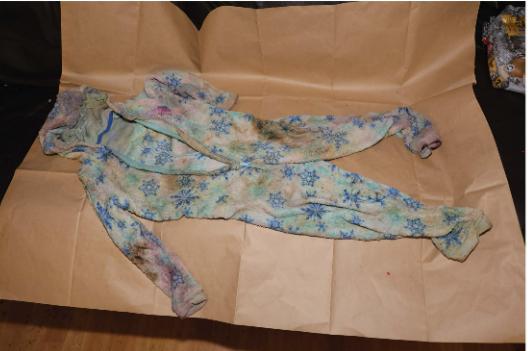
Kyle Bevan did not specifically intent to kill, but he was completely reckless to the danger to Lola’s life.
The violence he inflicted all over her body, including the severe and fatal attacks to her head – both by way of blunt force and violent shaking – were a threat to the life of such a young child, which must have been obvious to him.
He has been described by his own mother as thick and was diagnosed with ADHD as a child. I am satisfied that these points do not reduce Kyle Bevan’s culpability. He was 28 years old and perhaps immature, but he knew exactly what he was doing.
He had no previous convictions for violence, but he had been causing visible injuries to the children on the sly for a number of months.
This murder was the worst thing he had done, but it was not out of character. This is a very serious case, which the balance of features I have identified moves the appropriate minimum term a long way up from the 15 year starting point.
I now turn to Sinead James’ conviction for allowing the death of a child.
Her relationship with Lola’s biological father had been brief. He was a loving and attentive parent to Lola from a distance.
However, she came into the relationship with Kyle Bevan as a victim of past domestic abuse from other partners.
As a result, she had been trained through domestic abuse programmes to protect herself and her children, but she allowed Kyle Bevan into her household on the basis of a superficial initial impression.
As evidence against him began to mount, she continued to hope for the best and leave her children at risk.
She was surrounded by supportive friends and family. She was connected with social services. She always had places of refuge, but she shut her eyes to the very obvious danger which Kyle Bevan posed to her children.
Even after she saw him deliberately push a pram into oncoming traffic, she decided to accept and manage the risk to herself, and more importantly, her helpless children, because he was not as bad as her previous abusers and she liked having him there.
She prioritised the relationship with Kyle Bevan over concern for her children.
This was never more evident than when she went back to bed after the scream and the bang which she heard from Lola’s bedroom when Lola was with Kyle only hours before Lola was murdered.

I will apply sentencing guidelines for allowing a child to die. The harm is death, and therefore Category One.
Culpability includes failing to protect Lola from a murder which used very significant force.
All four quadrants of both Lola’s eyes were bleeding at multiple levels. There was a retinal fold and retinal splitting. There was optic nerve sheathe bleeding to both eyes.
These are all signs of very severe force. Lola had widespread Petechiae.
She had subdural bleeding, mainly to the left cerebral hemisphere, but also at the back of the right hemisphere and also at the base of her brain.
This was due both to very forceful shaking, and significant impact injury to the left, which also caused bruising to her left ear. Further evidence of impact was the soft tissue scalp swelling, and several signs over Lola’s skull.
The chronology shows that Sinead James was made aware of the multiple injuries to her children, leaving physical marks, and also a threat to the life of the baby in her pram which Sinead knew was Kyle Bevan’s fault.
She knew he had taken a hammer to the light switch, was subject to mood swings, and was prone to take recreational drugs – which had a bad effect on him, specifically Xanax in combination with alcohol.
She showed herself willing and able to remove her children to a place of safety and to demand that Kyle Bevan should leave the house, but she always brought the children back and kept leaving them in his sole care.
When her children were injured, she did not take them to a doctor or to hospital, and she did not involve the police when Kyle was violent.

She did not disclose the presence of Kyle or the injuries of her children to social services, although they were in active contact with her. So she failed to take any effective steps to protect Lola, including those which she had proved she was capable of. These are features of high culpability.
There are no Category D factors. Sinead James was on anti-depressant medication, but it was working well for her. Her responsibility was not reduced, substantially or at all by mental disorder, learning disability or lack of maturity.
Although she had been a victim of domestic abuse, this is not, in my judgement, linked to the commission of the offence.
She was able to assert herself against Kyle Bevan, and did so. She was neither coerced or intimidated into allowing Kyle to carry on living in her house.
She was happy to leave him alone with the children whenever he wanted and for however long he wanted. That was her choice.
Having heard all the evidence, including her own evidence at trial and her police interviews, I do not think this is a case where Sinead James allowed the death of her child because she was in fear of Kyle Bevan or a victim of domestic abuse by him.
That was not even her own evidence at trial. I do not accept the defence submission that domestic abuse linked to the commissions to the offence so as to provide her with a Category D feature.
I do accept that when he was in a bad mood, Kyle Bevan was intimidating.
But these moods passed, and most of the time, the text messages and the evidence at trial show a relationship where Sinead James was in control and able when she chose to remove herself and her children from Kyle Bevan and to berate him when she thought he deserved it.
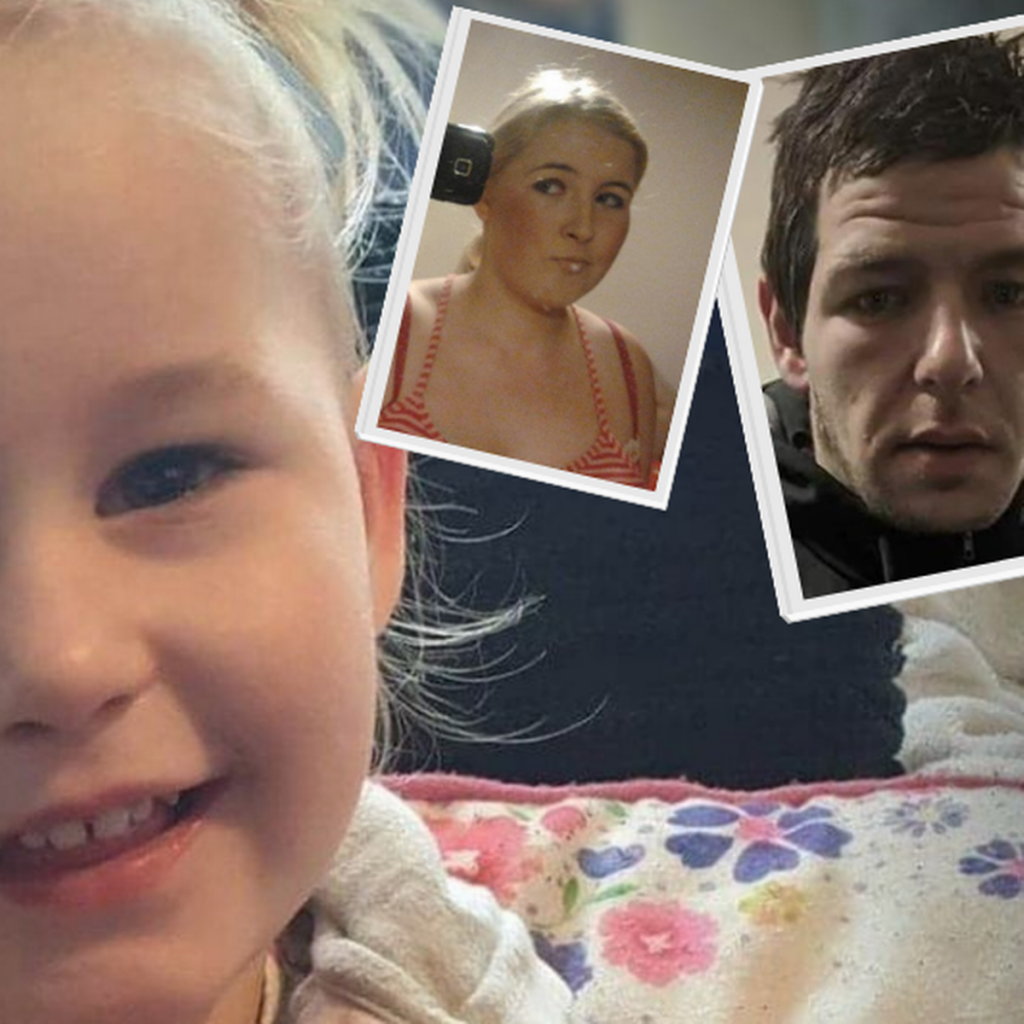
The only thing that she did hesitate to do, because of his reaction, was to contact the police or social services.
She always had full recourse to her friends, her neighbours and her family, and that was enough to protect the children if she had chosen to do it. She did not.
For example, she insisted, against the advice of Casey Morgan, of bringing the children back into the home after the pram incident when they were already with her in safety. There is no part of her evidence that she did this because she was in fear of Kyle Bevan.
Having considered all the category indicators in the sentencing guidelines and after a careful balancing exercise, I am satisfied that this case falls in to Category B.1, with a starting point of nine years custody, with a range of seven to 14 years.
However, I notice that the applicable sentencing guidelines sets ranges up to 18 years with Category A.1, which is above the statutory maximum of 14 years for this case in which the offence was committed before June 28, 2022, since when the maximum had been life imprisonment.
I will bear that in mind in Sinead James’ favour when arriving at a sentence in accordance with the guidelines.
A potentially aggravating factor is her failure to respond to warnings about Kyle and his behaviours.
She was warned by her best friend, Casey Morgan, and by the grandmother of Kyle Bevan’s own child.
But I recognise that Casey Morgan also at times seemed to support the relationship with Kyle, and that his mother emphatically assured her that the allegations against her son were lies.
There are weighty mitigating factors. She is very remorseful, as I saw when she gave evidence. She is also genuinely devastated by Lola’s death. She has lost custody of her surviving children, although she remains in contact with them.
After Lola’s death, Sinead James co-operated as fully as she possibly could with the investigation.
She has no previous convictions, and nothing else which is relevant on her record.
She is a victim of previous domestic abuse, and Kyle Bevan did create an atmosphere of intimidation in the home at times, which I accept as a mitigating feature even though I have decided it does not go so far as to be a Category D guideline feature.
Taking everything in to account, the sentence will be below the start, and a little below the bottom of Category B.1 guideline range.
Kyle Bevan has already spent 368 days in custody on remand. Sinead James has spent 19 days.
The days spent on remand in custody will automatically count towards the custodial term of her sentence, and I will deduct them from the minimum term for his.
Sinead James will serve one half of her sentence in custody, before being released on licence.
When she is released, she will be on licence until the end of her sentence. She must comply with the terms of the licence, and commit no further offence, or else she will be liable to serve a further period in custody.
Each defendant must pay the statutory surcharge of £190 or such other correct figure as may be substituted administratively.
Stand up Kyle Bevan.
For the murder of Lola James, I sentence you to imprisonment for life, with a minimum term of 28 years, less 368 days already spent in custody on remand. You may go down.
Stand up Sinead James.
For allowing the death of Lola James, I sentence you to six years imprisonment. You will serve half, namely three years, before release on licence. You may go down.
Community
Anzac Day commemoration service held in Milford Haven
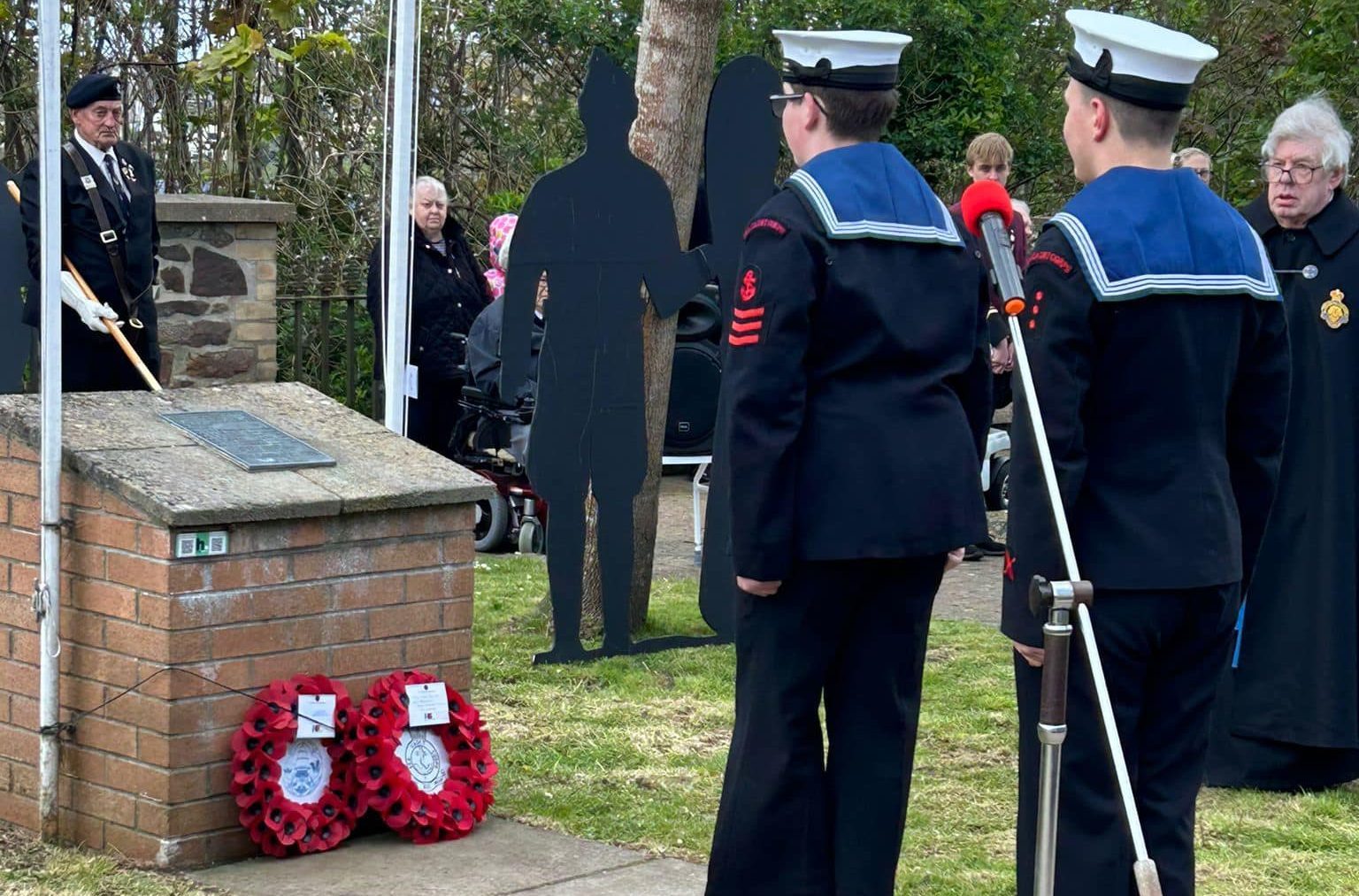
IN a service held on Sunday (Apr 28), the Milford Haven Branch of the Royal British Legion led a poignant commemoration service to mark Anzac Day, honouring the valor and sacrifices of the Australian and New Zealand Army Corps (ANZAC) during the Gallipoli campaign in World War I.
The service, which took place at 11:00am, on Hamilton Terrace, Milford Haven, witnessed a significant turnout.
Attendees included members of the Australian Signals and Signal Company as well as representatives of Milford Haven Town Council and the Milford Haven Sea Cadets.
The service commenced with a welcome and introduction by Lt Col Warren Coetzer, followed by a rendition of the National Anthems of Australia, New Zealand, and Wales, embodying a spirit of unity and remembrance. The anthems were a moving tribute to the camaraderie and international bonds formed in times of conflict.
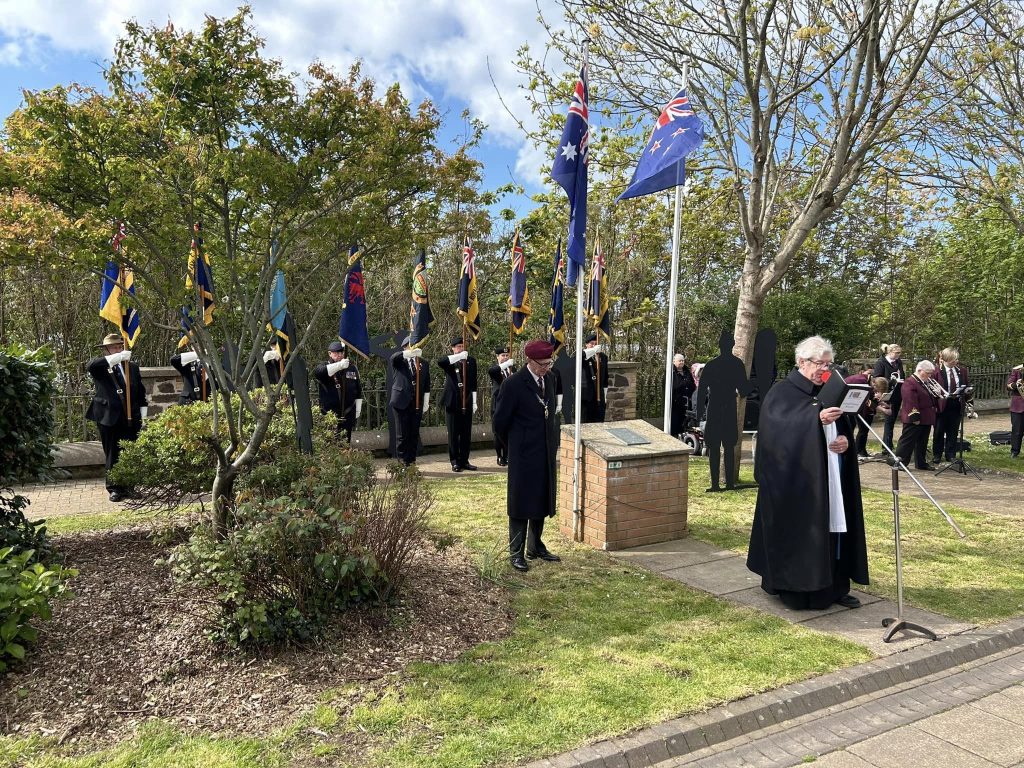
During the service, the Ode of Remembrance was recited, a profound moment that prompted reflection on the courage and fellowship of the ANZAC forces.
The emblematic Rising Sun Cap Badge and the Union Flag were prominently displayed on the event programme, symbolising the service and sacrifice of those who served under them.
Local dignitaries laid wreaths, and a two-minute silence was observed, offering a chance for personal reflection on the cost of war and the price of peace.
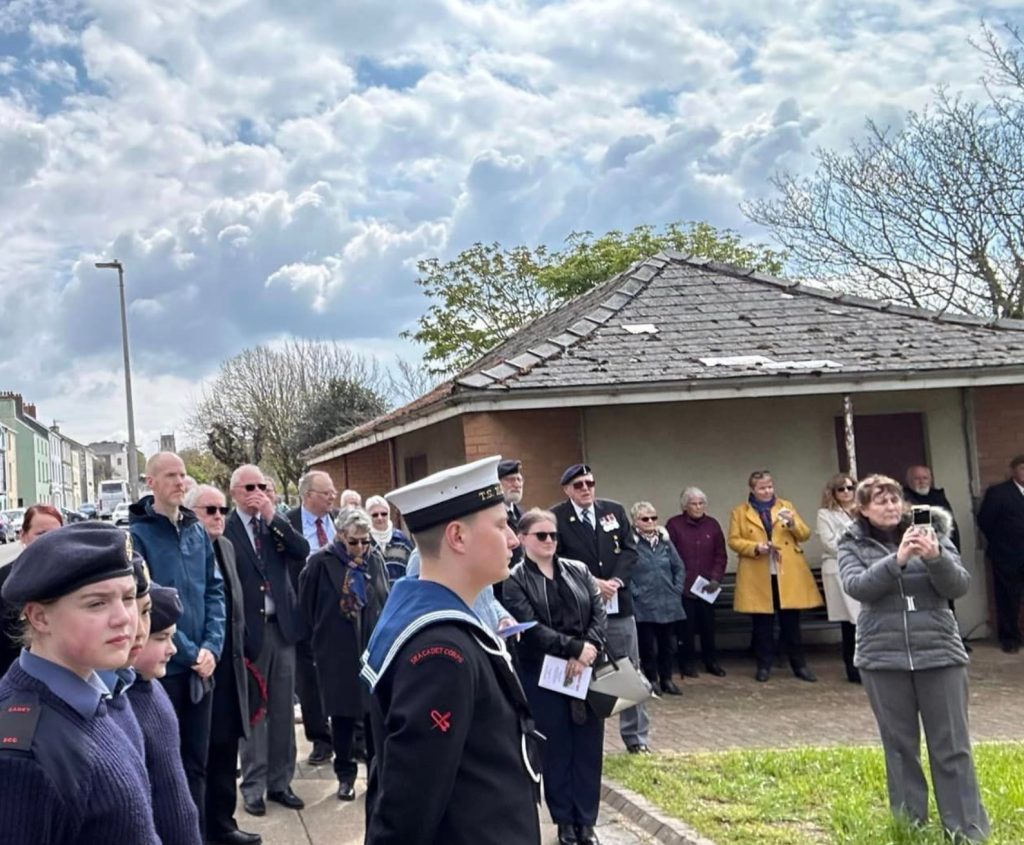
The commemoration concluded with a prayer for peace, leaving the attendees with a message of hope and a renewed commitment to the values for which the ANZAC soldiers bravely fought.
The service was not just a remembrance of past sacrifices but also a reminder of the enduring spirit of the ANZACs, which continues to inspire and guide future generations.
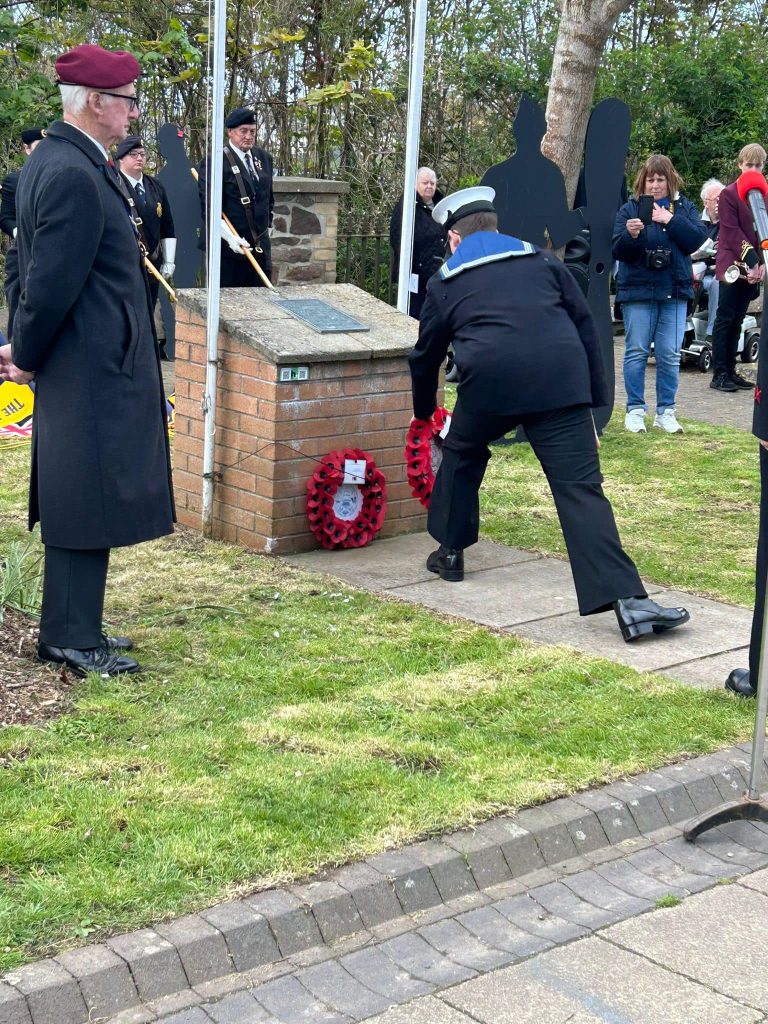
Community
Survey of Picton Castle reveals groundbreaking medieval architecture

THE first ever detailed architectural survey of Picton Castle, Pembrokeshire, has revealed a medieval castle ahead of its time in terms of design and high status living. Much altered in the Georgian period, the castle was surveyed by the author, Neil Ludlow, with Phil Poucher of Heneb – Dyfed Archaeology (formerly Dyfed Archaeological Trust) and funded by the Castle Studies Trust: it reveals a sophisticated building fit for royalty.
However, the building was actually built between 1315-20 by a senior royal government official called Sir John Wogan, who held office in Pembrokeshire, Northern England and Ireland and possibly fought on a military campaign in Gascony.
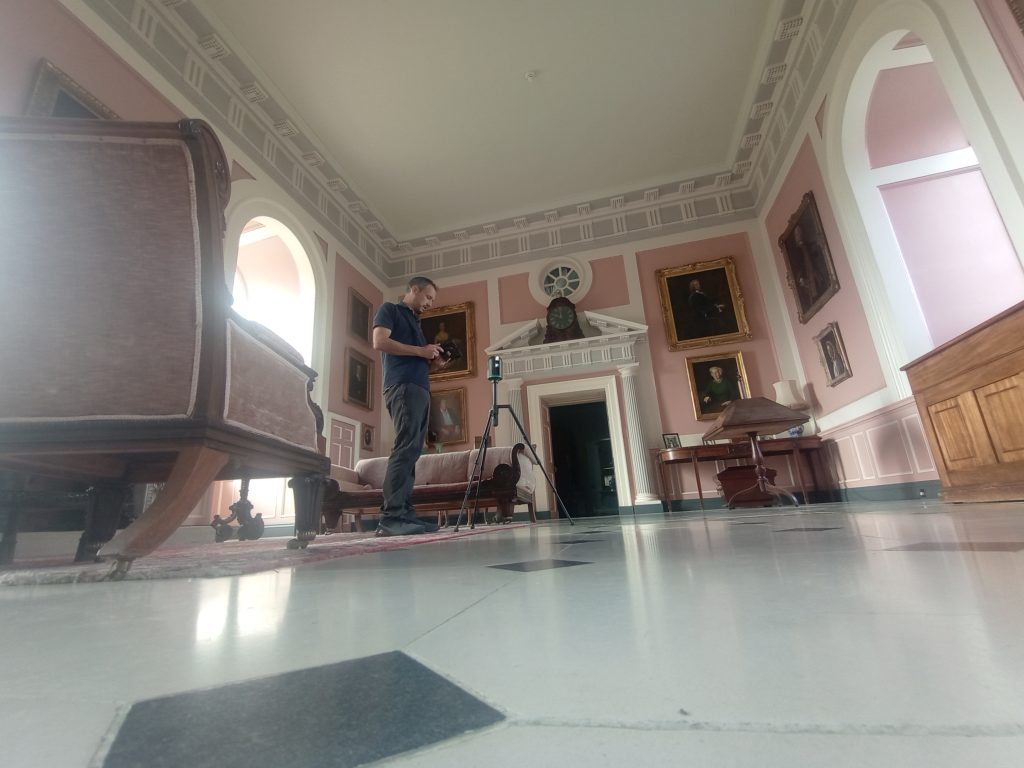
While outwardly it retains much of its medieval flavour, the interiors were extensively made over during the eighteenth century so that it now presents itself first and foremost as a Georgian country seat. But beneath this veneer, much medieval work still survives – though a lot of it is tucked away behind stud-walls, in cupboards, or is otherwise obscured.
Picton’s unique layout makes it a castle of great importance and architecturally ground-breaking for when it was built in the early fourteenth century. Most castles have at least some close parallels, but Picton is effectively one of a kind. Close study shows that it resolves as a central first-floor hall, flanked by services and a chamber-block to form a very early example of the three-unit ‘H-plan’ house.
The gatehouse – unusual in buildings of this kind – led onto an equally unusual ‘grand stairway’ to the hall; a second ground-floor entry probably led to an external kitchen and bakehouse.
The castle’s spatial disposition, access and circulation are meticulously planned, while the domestic appointments show a remarkable level of sophistication for the period, including what appear to be vertical serving-hatches between the ground floor and the service rooms above. At second-floor level, the east towers and gatehouse form two integrated suites of residential apartments either side of a chapel, in a manner firmly rooted within royal planning. The opposite pair of towers, at the west end, seem to have been united internally to form a residential chamber-block, for Wogan’s officials and guests, possibly served by latrines in the former west tower; the present partition walls are later.
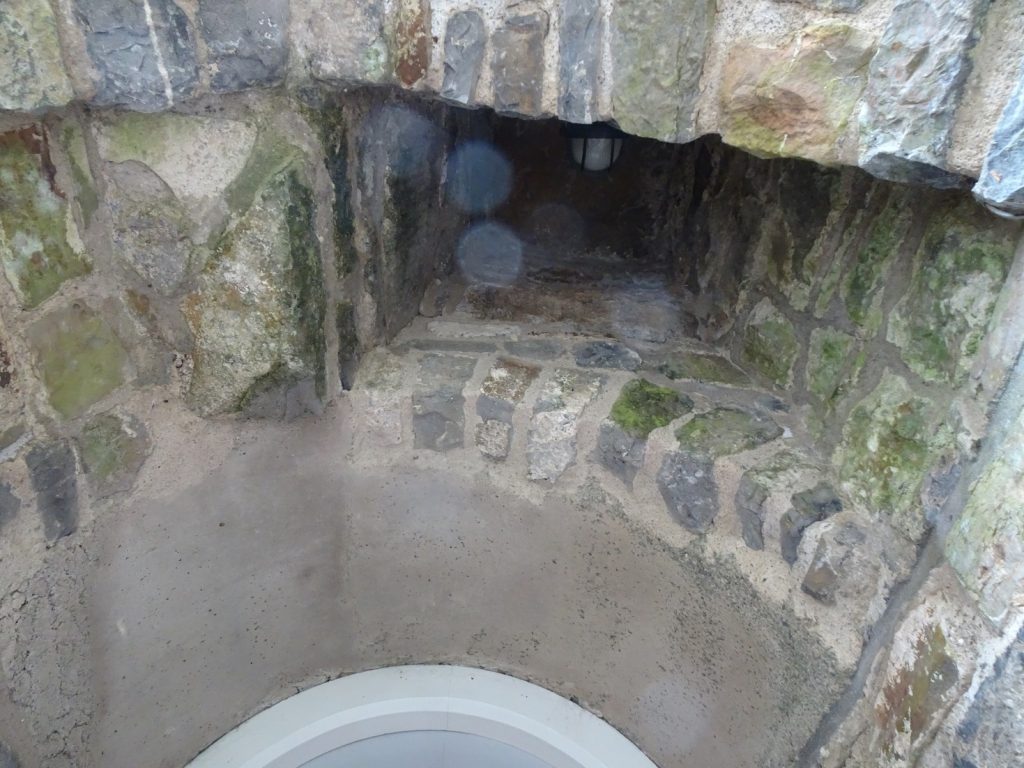
Neil Ludlow told The Pembrokeshire Herald: “The enigmatic castle at Picton in Pembrokeshire is best-known for its magnificent Georgian interiors. But beneath this veneer is a medieval castle, from around 1315-20, with a unique layout. A towered hall-block with a pioneering ‘H-plan’, it reveals elements derived from royal planning, and sophisticated domestic arrangements including serving hatches between the floor levels. These innovations show it to have been a castle that was ahead of its time.”
Castle Studies Trust Chair of Trustees Jeremy Cunnington added: “The Castle Studies Trust is delighted to have funded the first ever detailed survey of Picton Castle and to have learned so much more about the medieval form of this unique building.”
Dr Rhiannon Talbot-English, Director at Picton Castle Trust told this newspaper: “Picton Castle has always been something of an enigmatic mystery: hidden gothic alcoves and arches, secret spiral staircases and untouched medieval Undercroft. Picton Castle Charitable Trust is extremely grateful to the Castle Studies Trust for its generous financial support which has enabled this research to be undertaken and we look forward to sharing this new knowledge with the public in a new exhibition about the early castle.”
Community
Solemn tributes at Freshwater West for WWII maritime tragedy
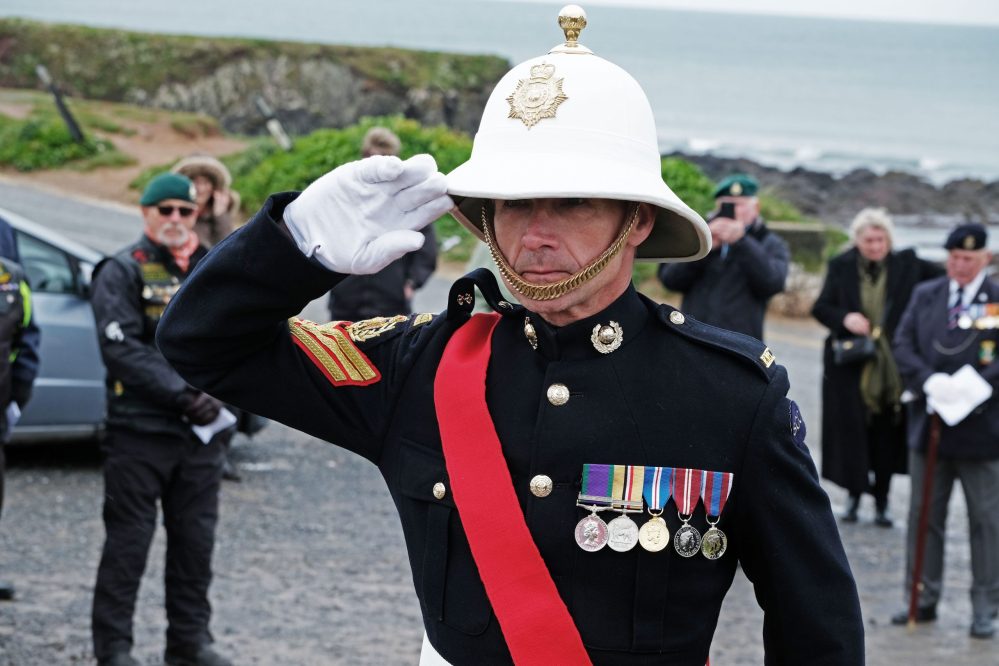
IN an emotional gathering at Freshwater West, Pembrokeshire, the public and veterans convened on April 29, to honour the memory of the 85 souls lost in the tragic sinking of Landing Craft, Gun (LCG) 15 and LCG 16 during a brutal storm in April 1943.
The memorial service took place near the scenic, surf-popular beach, where the community assembled to reflect on the calamity that struck during a perilous wartime operation.
The service highlighted the sacrifices made by those aboard the LCGs, as well as six valiant crew members from the HMS Rosemary, who perished while attempting a daring rescue amidst the tempest.
Originally designed as Landing Craft, Tanks (LCTs), LCG 15 and LCG 16 were converted at Belfast’s Harland & Wolff shipyard to support amphibious operations by equipping them with heavy artillery.
Their redesign included the installation of two 4.7 inch guns intended for use during D-Day, suggesting that, had they survived, these crafts and their crews could have played a pivotal role in the Normandy Landings.
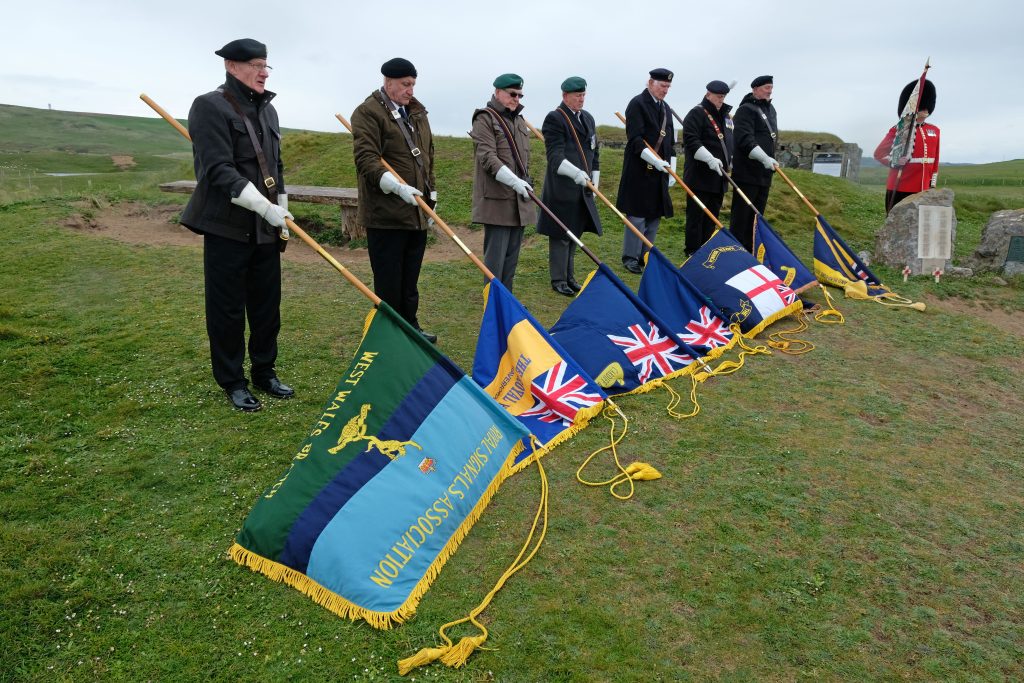
The crafts were en route to Falmouth when they encountered severe weather off the coast of Freshwater West.
Compounded by their flat-bottomed design, which was ill-suited for rough seas, both vessels tragically succumbed to the stormy conditions.
Denied shelter at Fishguard, they were compelled to continue towards Milford Haven, a decision that ultimately led to their sinking.

Today, the wrecks of LCG 15 and LCG 16 lie as protected war graves, and a poignant memorial stands overlooking the beach, a testament to the bravery and enduring legacy of the men lost to the sea.
Visitors to the memorial site at Freshwater West, which also hosts another commemorative marker at Thornton Cemetery in Milford Haven, can reflect upon the harrowing experiences faced by wartime naval personnel and the profound impact of their service.
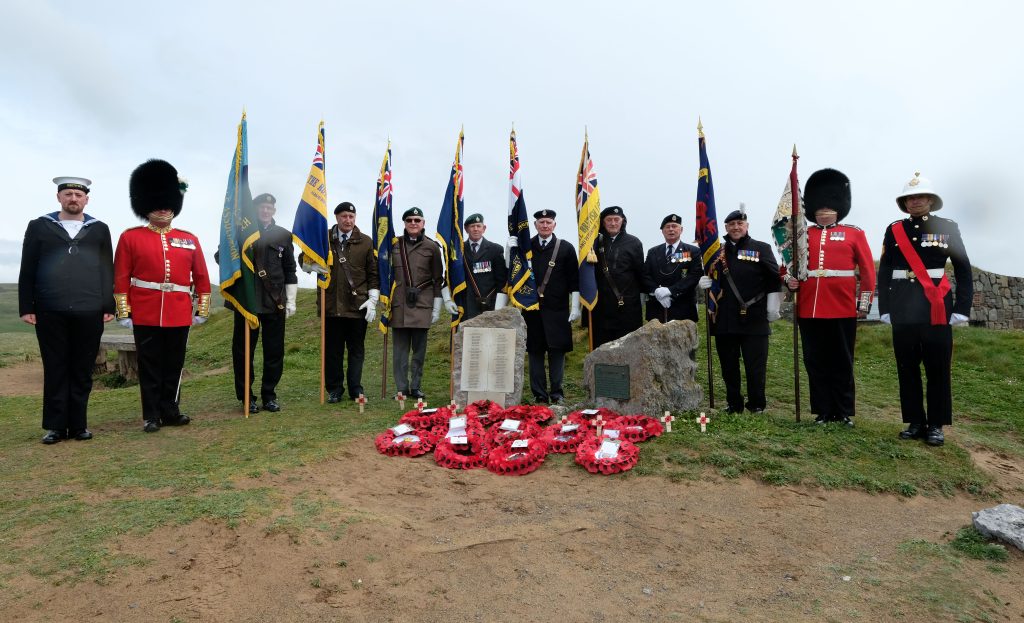
The event served not only as a remembrance but also as an educational experience, particularly for younger generations unaware of the perils faced by their forebears during such tumultuous times.
The memorial at Freshwater West remains open to the public, offering a place for contemplation and respect, against the backdrop of one of Wales’ most beloved surfing beaches, where the echoes of history resonate with the sounds of the waves.
Pictures by Martin Cavaney
-

 News5 days ago
News5 days agoPolice and air ambulances at ‘serious incident’ at West Wales school
-

 Business3 days ago
Business3 days agoLargest Welsh port appoints communications and marketing director
-
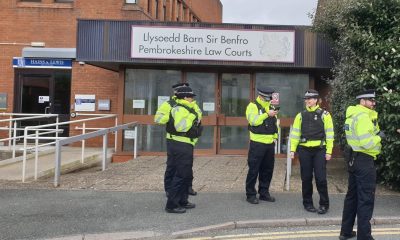
 Crime5 days ago
Crime5 days agoPembrokeshire pensioner accused of 17 sexual offences against children
-

 Crime4 days ago
Crime4 days agoAll three school stabbing victims discharged from hospital, police confirm
-

 Community6 days ago
Community6 days agoCounty Hall to offer space for community banking
-

 Crime7 days ago
Crime7 days agoBrian Davis: Wanted on suspicion of commercial burglary
-

 Sport6 days ago
Sport6 days agoSwifts eyes on double.
-

 Community3 days ago
Community3 days agoSuspected explosive device found on west Wales beach














